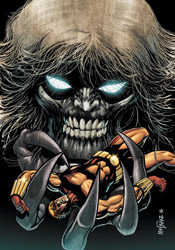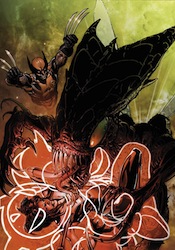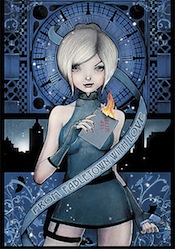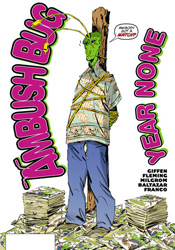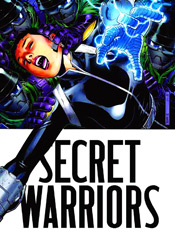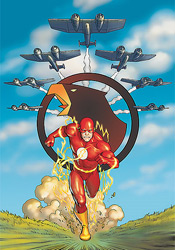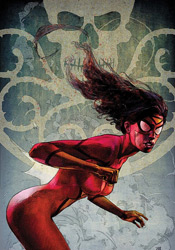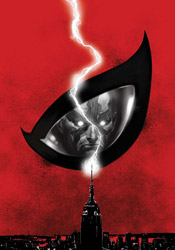
This is the first installment of the much-ballyhooed "Gauntlet" storyline that's promised to reinvent several of the hero's classic foes, but like the young Kraven, it's not in a big rush to get right to the heart of the matter. Writer Mark Waid sets a pace this month and sticks with it, donating the entire issue to an inspection and reassessment of Max Dillon, better known as Electro.
Waid aims to make the character less of a laughingstock and more of a sympathetic figure, with mixed success. When his introspections are on a personal level, the writer's work is at its strongest. As the tormented loner, desperate to feel another's touch or just go back to the simple life he enjoyed before he became Electro, Dillon seems genuinely relatable, his frantic desperation often misinterpreted by the good guys as simple, selfish villainy. That's the kind of angle that could really work for this kind of a story, but Waid doesn't leave it there. Turning his attention to more topical subjects, he ties Max's present financial struggles in with the rash of investment fraud stories populating the real headlines. Where the new glimpse at the character's mentality was appropriate and effective, the attempt to turn him into a folk hero, ranting against government corruption and corporate greed from the rooftops, is more of a reach. It feels gimmicky and unnecessary, and seems like something we'll be rolling our eyes at once it's republished in trade format.
If you're not familiar with Paul Azaceta's previous work in Captain Marvel or Daredevil, picture a blend of Tim Sale, Jack Kirby and Mike Mignola. Usually I'm wary of this kind of over-simplified artwork when it comes to superheroes, especially ones with a wardrobe as bright as Spider-Man's. Less linework means more space for a glaring, primary-heavy color palette and the accompanying eyesores that always seem to follow. Some artists skirt the issue by bathing the page in deep shadow, but that never really feels like a good fit for the clean-cut Peter Parker. Azaceta manages to sidestep the potential pitfall without resorting to such desperate measures. I'm not sure if it's his knack for dynamic posturing, an effective eye for silhouette or a careful handle on composition, but he comes out of this episode smelling like roses. Colorist Dave Stewart certainly lends a big hand, using soft, suitable secondary colors in the background to offset the bright shades I feared in Spidey and Electro's outfits and ensure the focus remains on the artwork itself rather than the crazy tones adorning its subjects.
As opening volleys go, this was lacking a lot of power. It didn't feel like the first chapter of one of Spider-Man's greatest challenges so much as it did another day at the office, and that's both a good thing and a bad thing. It's less intimidating than the epic, tide-turning crossovers that have dominated Marvel's publishing schedule for the last few years, but it's also missing a sense of permanence. Maybe that will change as things play out. Despite a few weak attempts at social commentary, at its heart this is still an entertaining distraction. Waid shouldn't be hosting his own talk show any time soon, but he can still write a good comic book. Borrow it from a friend.
Overall Score: 7.5
